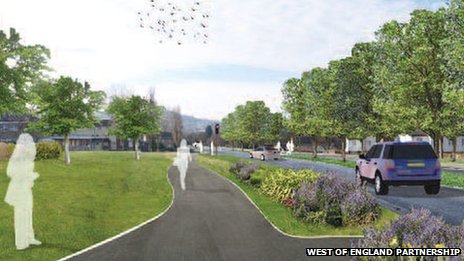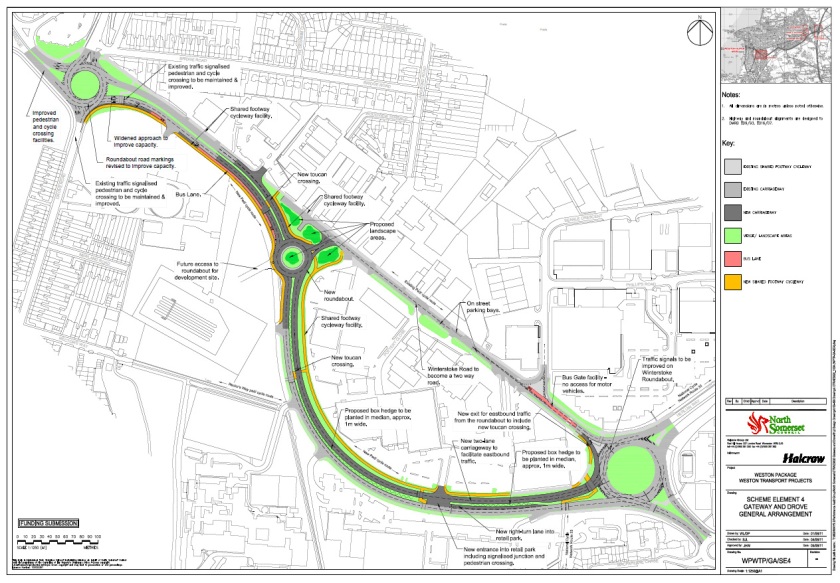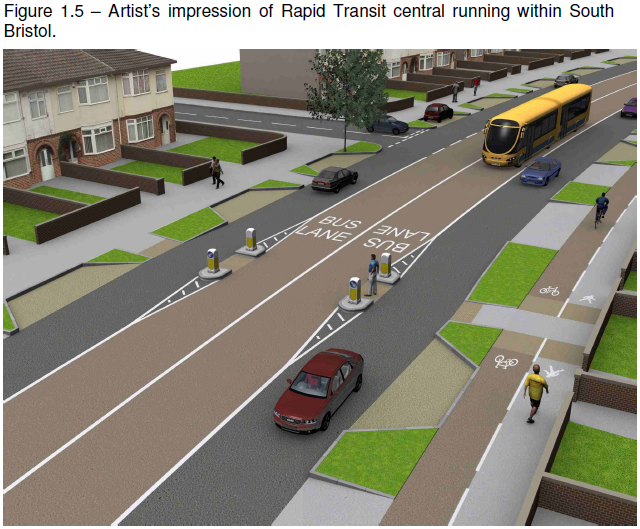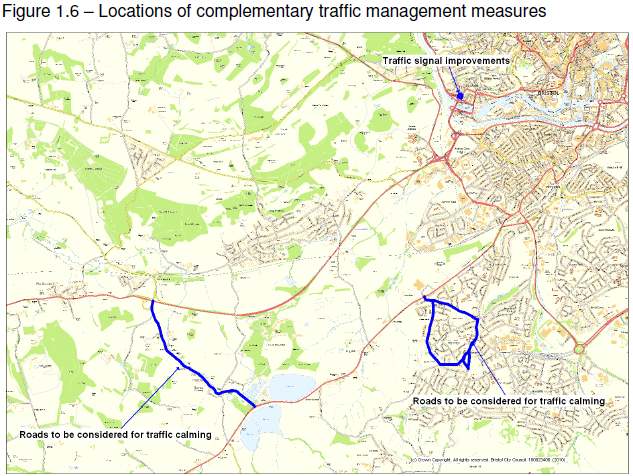Not having anything new to post, but having been reminded of this antique scrawl by last week’s Cycling Embassy response to the Department for Communities and Local Government’s consultation on whether they should interfere in local parking policies, I figured I could fob you off with something originally posted way back in august 2011.
This week, the Department for Communities and Local Government put out a press release about town centre parking. Unlike last time, they didn’t even have to announce that Pickles is ending The War On The Motorist™. On that point, their work was done for them, by 36 newspapers and the Daily Express. Aren’t they well trained?
This time around, Rubberknickers Pickles is ending The War by lifting restrictions on how much of our town centres can be given over to car parking. The idea is nothing new, of course, but it is assumed that most will have forgotten the previous occasions when it was announced. The “news” is that the paperwork has gone through: the new version of the government’s planning rules are complete.
As far as I can tell, the notorious limits on car parking provision that have been dropped were Policy EC8, “Car parking for non-residential development,” in the Planning Policy Statement 4 of 2001 [PDF]. This policy instructs local authorities:
Local planning authorities should, through their local development frameworks, set maximum parking standards for non-residential development in their area, ensuring alignment with the policies in the relevant local transport plan and, where relevant, the regional strategy.
In determining what their maximum should be, the policy suggested that authorities think about the needs of non-car users, the effects of congestion and need to tackle carbon emissions and air pollution, and:
h. the need to make provision for adequate levels of good quality secure parking in town centres to encourage investment and maintain their vitality and viability
j. the need to provide for appropriate disabled parking and access
k. the needs of different business sizes and types and major employers
That is, the notorious Labour control-freakery over town centre parking was, er, an instruction for local authorities to develop guidelines that they think are suitable for their own local situations. The Policy document goes on to state that these local standards that authorities have developed should then be applied to planning applications — unless the planning applicant gives a good reason for them not to apply.
So these maximum limits are locally decided and not really binding. That doesn’t quite look like “centrally controlled parking quotas” to me. In his press release, Pickles says:
The Government believes councils and communities are best placed to set parking policies that are right for their area and based on local need – not Whitehall. Local people know the level of parking that is sustainable for their town centre.
Which seems to be exactly what the old Policy document supported.
Perhaps there was some other Labour policy, rule, or law that I haven’t been able to find? Anybody?
I’m not sure what real difference the removal of this policy makes. Previously councils were made to think about the effect of congestion and pollution and the like on their town centres, and the needs of people on foot and bike and bus. When a planning application came in they would know how to recognise whether it would be bad for their town, and they would have a good pre-prepared excuse to reject a development that would make their town centre a more congested and polluted place, or which would hinder walking, cycling, and public transport. But I assume that they’re still allowed to reject those developments if they still don’t like congestion and pollution and dead places?
But perhaps the new policy document will send a message to local authorities: your town centres are in a bad way, and you need to do something about it. In his press release, Pickles says that the removal of this rule will “provide a big boost to struggling high streets”:
The new draft National Planning Policy Framework, recently published, will do away with these anti-car restrictions introduced in 2001 and give high streets a boost to compete for shoppers. It will encourage new investment in town centres, provide more jobs and encourage more charging spaces for electric cars.
Unfortunately, Pickles doesn’t explain how the new Policy will translate into more competitive town centres with more jobs. More importantly, he presents no evidence to support the statement. So I went looking for it. Luckily, Greg Marsden has already reviewed the evidence on parking policies.
One of the studies that Marsden reviews is the 2002 Lockwood Survey, which divides “town centres” by size of the town/catchment area, and whose summary states:
4. Findings of the parking survey:
Major District Centres: Poor store performance is linked with low levels of parking, reliance on car parks more than 5 minutes walk from prime shopping streets and high charges (the report gives indicative levels).
Sub Regional Centres: Poor store performance is linked with reliance on car parks more than 5 minutes walk from prime shopping streets and high charges (the report gives indicative levels).
Regional Centres: Poor store performance is linked with high charges for 3 and 4 hour stays (the report gives indicative levels).
But when Marsden looked at the data he found it a lot more difficult to support these conclusions. In “major district centres”, those with very low levels of parking were indeed more likely to be performing badly. But those with mildly low levels of parking did better than those with high levels. And in regional centres, those with higher levels of parking were struggling more than those with lower levels. But those with very high levels of parking did a little better than those with very low levels.
There simply doesn’t seem to be any pattern in this data at all. The authors of the original report had cherry picked those parts of the data that made it look like low parking provision was harming shops, while ignoring those parts that said the reverse. Marsden found the same for parking charges and the proportion of parking spaces within a five minute walk of the main shopping area: the data was all over the place, showing no obvious and consistent relationship with economic performance. Why not? Because if variation in parking provision has any effect on town centre attractiveness and competitiveness at all, it is masked by far more important factors — perhaps factors like whether the town centre is easy to get to, has shops people want to use, and is a nice place to be.
So why is Pickles press releasing his new policy as the saviour for struggling town centres? Why did most of the newspapers toe that line? We’ve developed a national myth that giving over more of our town centres to parking is good for the businesses in them.
Sustrans documented the nature of this myth by talking to traders and shoppers on Gloucester Road in Bristol. Bristol is relatively dense and affluent with above average cycling and car ownership rates and, even by British standards, appalling public transport. Gloucester Road doubles as a major artery with many bus routes and a neighbourhood centre lined with mostly independent shops. As Bristol Traffic documents, its bus and bike lanes are usually filled with parked cars.

Shopkeepers on Gloucester road estimated that more than two fifths of their customers came by car. In fact it was only just over a fifth. They greatly underestimated how many people walked, cycled, or took the bus. The shopkeepers were perhaps being big-headed, believing that their businesses were capable of attracting people from a wider catchment area, when in fact most customers lived within an easily walkable distance.
And the shopkeepers greatly overestimated the importance of drivers to their business in another way: while the people who walked were likely to stick around and visit several shops and businesses, the drivers typically pulled up, ran in to one shop, and got out of there as fast as they could. Perhaps that’s because often they couldn’t even be bothered to park up properly and instead stopped in the bike lanes outside their destination.
High street shopkeepers and business owners greatly overestimate the importance of drivers to their success. Why? Perhaps proprietors are more likely to be drivers themselves, and, as is so often the case with motorists, can’t get their heads around the fact that so many others aren’t? Perhaps their view of the street through the big shop window is dominated by the big metal boxes passing through? Perhaps they see the apparent success of the big soulless out-of-town supermarkets and shopping malls, attribute that success to the acres of car parking, and leap to the conclusion that car parking is all that a business needs for success — that the model which succeeds on the periphery can be applied to the model that is failing in the centre.
I suspect that the opposite might be true. Those who are attached to their cars will go to the barns on the ring-roads. You won’t attract them back to the town centres. But by trying — by providing for the car parking at the expense of bike paths and bus lanes and wider pavements — you might drive away the surprisingly high proportion of town centre customers who don’t come by car, who come precisely because, unlike the malls, the town centre is walkable and cycleable and because the bus can get through. Town centres aren’t just competing with out-of-town malls and supermarkets any more. Those who don’t want to drive to out-of-town barns can sit at home, click on some buttons, and have things driven to them. Compared to most of the traffic-choked high streets in this country, that’s quite an attractive option.



























